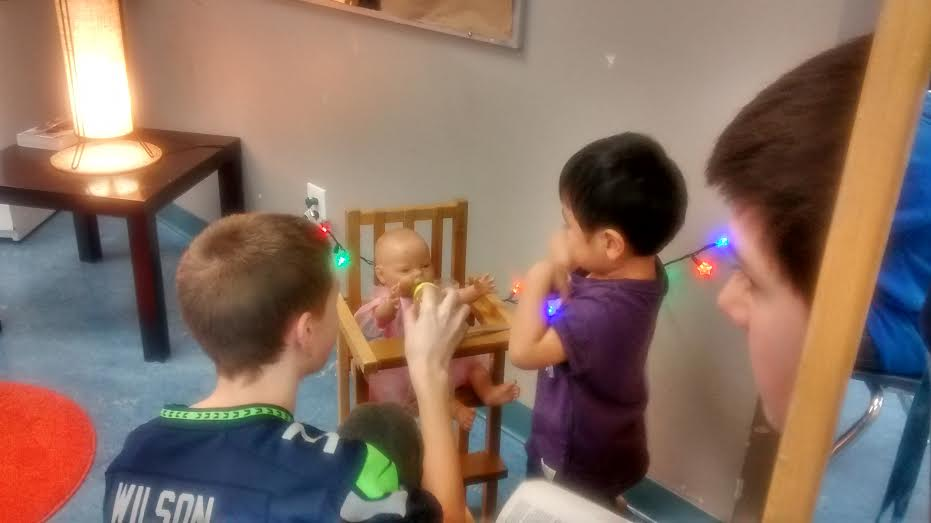Each year we find a partner teacher from a local Elementary
School, one who is willing to have his/her class act as Big Buddies to our
Preschoolers, and commit to ongoing visits throughout the year. For the past
few years, we have been fortunate to have a split grade 6 and 7 class from
Gilmore Elementary happily be Big Buddies for our Threes Preschool Class.
The first meeting of the Buddies is probably the most important. It can set the pace, and level of connection for the rest of the year. We typically put out activities that the Preschoolers would find challenging if not for guidance and assistance from their Big Buddy.
Each Preschooler is matched with either one or two Buddies, dependent on class sizes. We are often amazed and impressed by the nurturing that flows from even the most energetic Big Buddies. Even though both classes discuss the importance of respect and safety prior to meeting, the Big Buddies seem to innately sense the importance of kneeling down, speaking softly and taking this new friendship slow and steady.
After a few visits, the Big and Little Buddies become very
familiar with one another. Most have developed a nice friendship and look
forward to each visit.
~Barbi
The first meeting of the Buddies is probably the most important. It can set the pace, and level of connection for the rest of the year. We typically put out activities that the Preschoolers would find challenging if not for guidance and assistance from their Big Buddy.
Each Preschooler is matched with either one or two Buddies, dependent on class sizes. We are often amazed and impressed by the nurturing that flows from even the most energetic Big Buddies. Even though both classes discuss the importance of respect and safety prior to meeting, the Big Buddies seem to innately sense the importance of kneeling down, speaking softly and taking this new friendship slow and steady.
~Barbi








Comments